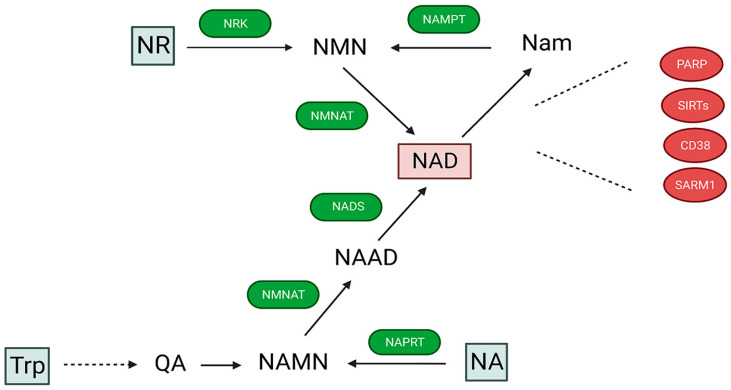Figure 1.
Metabolic pathways of NAD biosynthesis and NAD degradation. The main source of NAD is from the salvage pathway, where it is generated by enzymatic reactions that use nicotinamide (Nam) to generate nicotinamide mononucleotide (NMN) via nicotinamide phosphotransferase (NAMPT) activity. The NMN can also be formed by phosphorylation of nicotinamide riboside (NR) via NR kinase (NRK). NMN is then converted to NAD by nicotinamide mononucleotide adenylyl transferase (NMNAT). In the Preiss–Handler pathway, nicotinic acid adenine dinucleotide (NAMN) is synthesized from nicotinic acid (NA). Subsequently, NAMN is converted by NMNAT into nicotinic acid adenine dinucleotide (NAAD), which is then amidated to NAD by NAD synthetase (NADS). De novo pathway starts from tryptophane (Trp), and also leads to formation of NAMN by conversion from quinolinic acid (QA). NAD is consumed during poly-ADP-ribosylation or acetylation of proteins driven by PARP or sirtuins. Additionally, NAD is used as substrate by CD38 and SARM1 enzymes.

